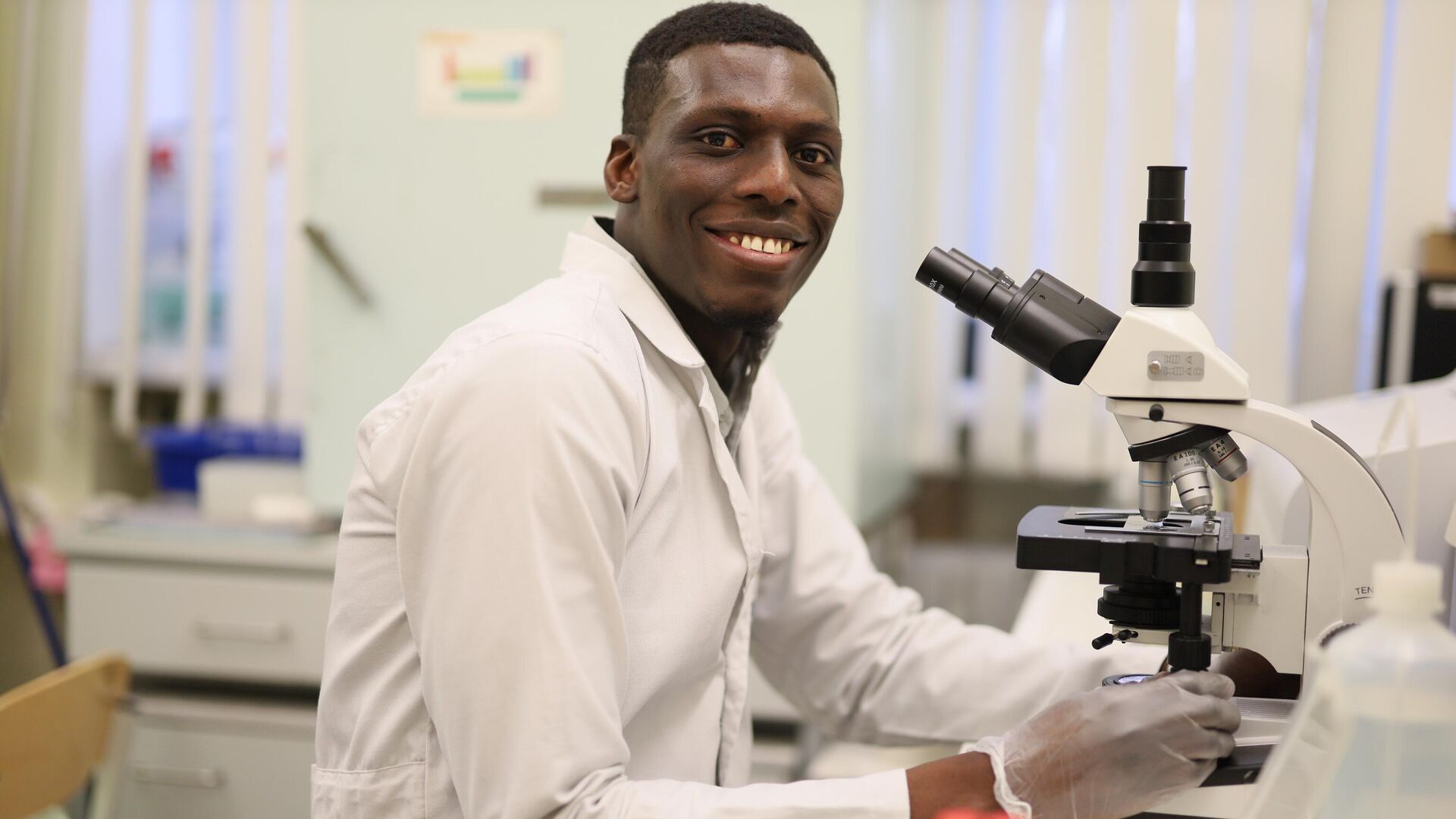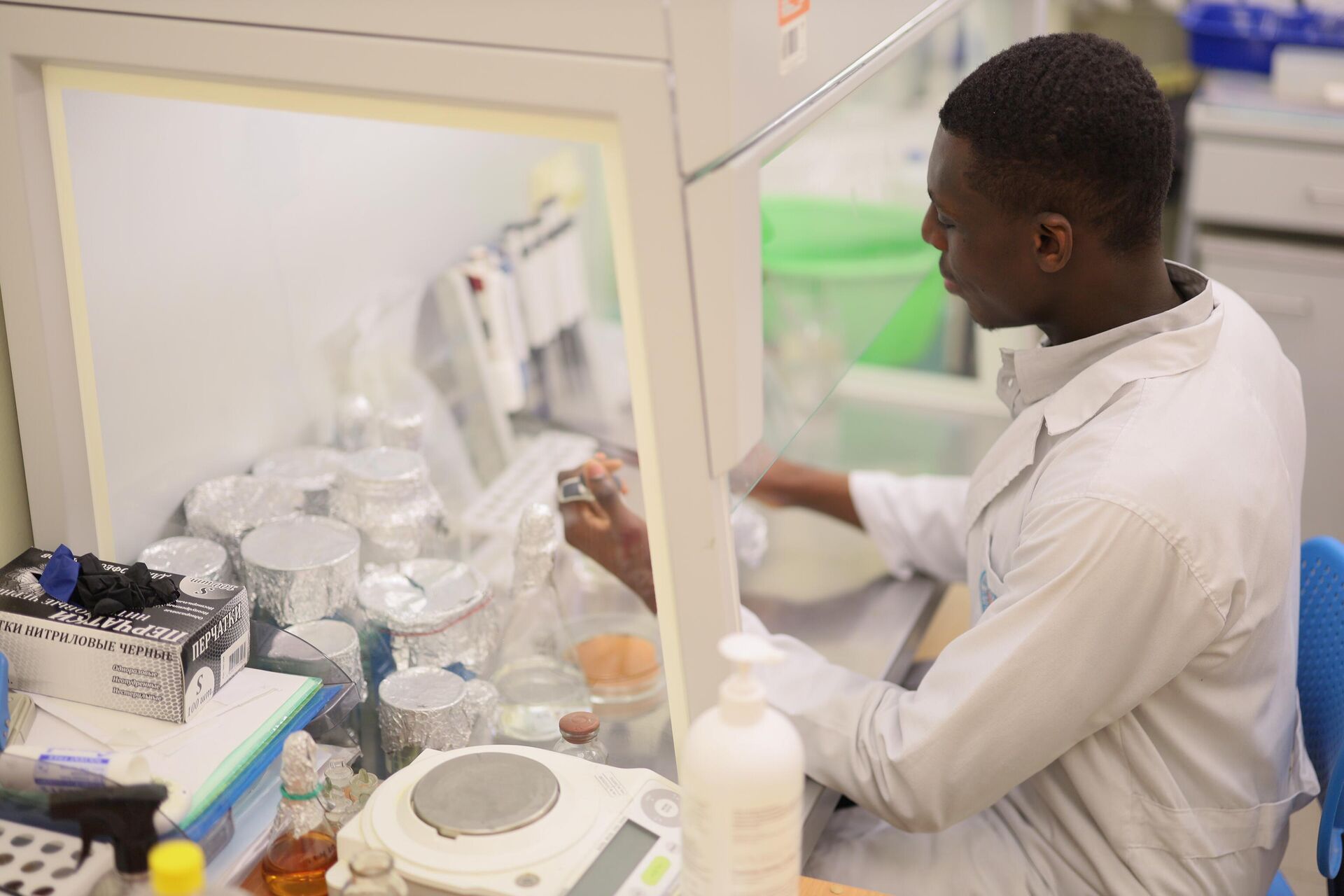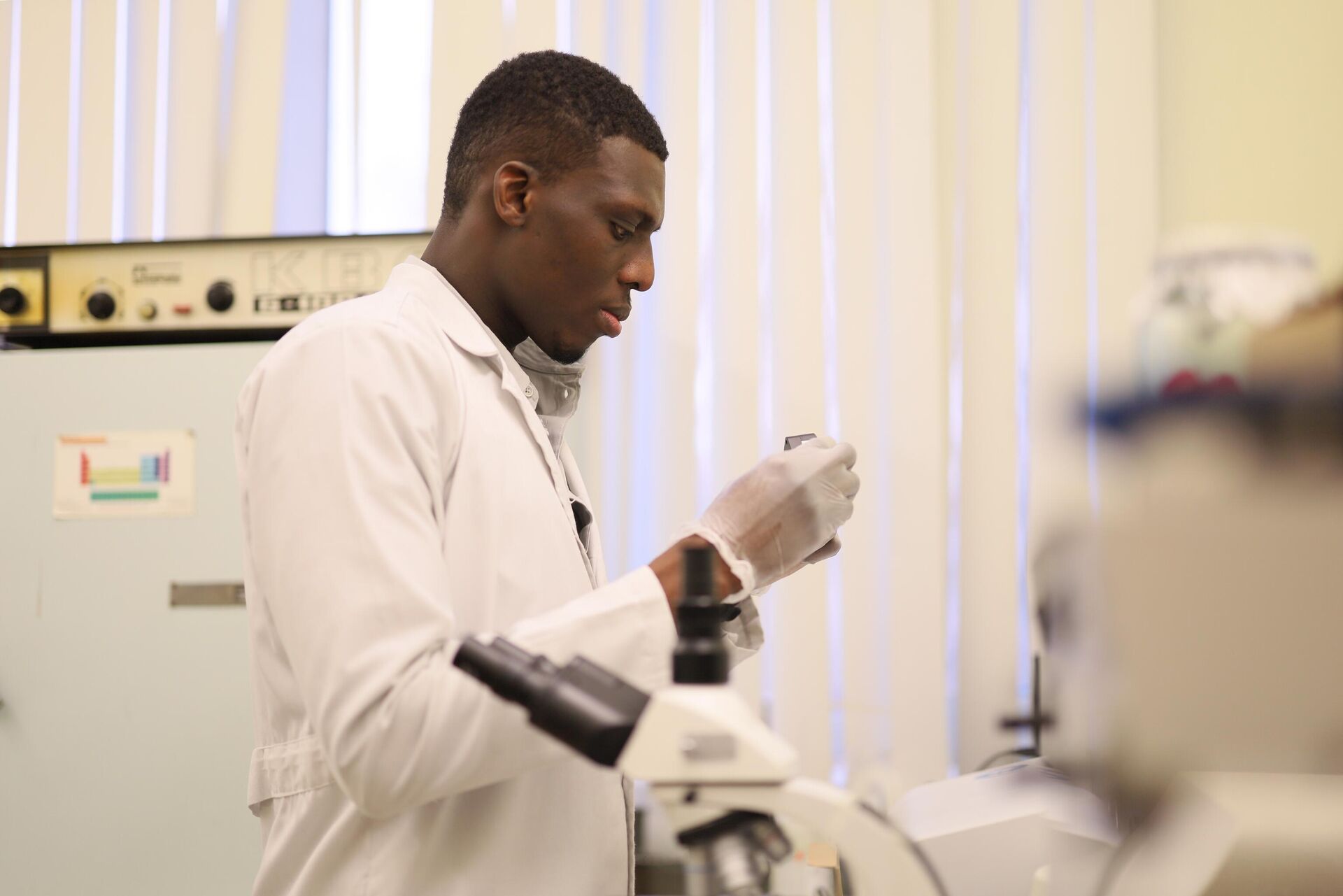Ghanaian Researcher Studies Microbial Pigment That Can Improve Human Health
16:54 29.05.2023 (Updated: 16:56 29.05.2023)

© Sputnik . Ural Federal University (URFU)
Subscribe
Exclusive
Astaxanthin, a naturally occurring carotenoid pigment found in marine organisms such as salmon, shrimp, and lobster, has been mostly used as a pigment in aquaculture to give fish a distinct color and high market value.
Osman Kanwugu, a Ghanaian PhD candidate at Ural Federal University (URFU) in Russia, is among the researchers who have recently explored the various biological and health benefits of astaxanthin beyond its pigment properties.
"The main property that exists in [astaxanthin], as widely known in the scientific community, is its superior antioxidant properties," Kanwugu said in an interview with Sputnik Africa. "So if you compare astxanthin to, let's say, vitamin C, I'm sure a lot of people know that vitamin C is a very common antioxidant, Astxanthin is actually several times stronger in terms of antioxidant capacity than vitamin C. I think it's somewhere around maybe 100 times or even more capable than vitamin C. When you also compare it to, say, vitamin E, which is also another good antioxidant, astaxanthin is again several folds better."
Originally from a small village called Pungu in the Upper East region of Ghana, Osman completed his undergraduate degree in biochemistry at the University for Development Studies in Ghana. He then worked for two years as a research assistant at the university's medical school before pursuing a master's degree and later a PhD in biotechnology at the Ural Federal University in Russia.

Osman Kanwugu, a Ghanaian PhD candidate at Ural Federal University (URFU) in Russia
© Sputnik . Ural Federal University (URFU)
The young Ghanaian researcher said that he chose to study the field of biotechnology for the production of biological active substances primarily because of his interest in medical research and its potential impact on improving human health, which he found fulfilling as it gave him a sense of doing "something positive."
The idea of producing substances that could improve human health intrigued Kanwugu, and he has since dedicated himself to this area of research, presenting his findings and participating in scientific conferences.
The Ghanaian researcher has been studying how to produce this amazing substance with microorganisms. He also studies the effect of astaxanthin animals and human health.

Astaxanthin, a naturally occurring carotenoid pigment found in marine organisms such as salmon, shrimp, and lobster
© Sputnik . Ural Federal University (URFU)
In aquaculture, astaxanthin is added to the feed of farmed fish to give them the distinct pink or orange color that consumers have come to associate with high quality. But beyond its use in aquaculture, Kanwugu's research has revealed that astaxanthin has numerous health benefits that make it useful in the nutraceutical and cosmetics industries.
"So that's to say it has outstanding antioxidant properties, also research has shown, that it has some neuroprotective properties, it has skin rejuvenating properties, it's good for the eyes and stuff like this," Kanwugu argued.
Astaxanthin's unique structure allows it to traverse cell membranes and protect cells from oxidative stress, which is the root cause of many diseases, he said. When the body generates more free radicals than it can remove, it results in oxidative stress. This can lead to inflammation and other serious health conditions. Astaxanthin's unique antioxidant properties make it useful in managing and preventing such conditions.
"And then the other thing is that the astaxanthin is actually also able to stimulate a very important antioxidant pathway in the human body called the Nrf2. This pathway is basically a key regulator of redox metabolism in humans. And also in animals. So it regulates maybe 100 or more enzymes [proteins acting as biological catalysts] that actually have antioxidant properties or detoxification properties," Kanwugu said.
Animal studies indicate that Astaxanthin has positive effects on diabetes, cardiovascular diseases like stroke , neurodegenerative diseases like Alzheimer's and Parkinson's, arthritis and eye health. It is also believed to improve cognitive function. Astaxanthin has anti-inflammatory and antioxidant properties that make it useful in managing and preventing these diseases. However, human studies are ongoing to confirm these findings conclusively.

Osman Kanwugu, a Ghanaian PhD candidate at Ural Federal University (URFU) in Russia
© Sputnik . Ural Federal University (URFU)
Astaxanthin supplements have been approved in several regions for sale, but its effects on humans are still under investigation.
"There are some studies that say it has some anti-cancer properties, but all in all, these are all animal studies," the scientist said, adding that there are a "few dozen human trials that are ongoing."
Astaxanthin has also found its way into poultry farming, with farmers adding it to the feed of chickens to give egg yolks a distinct color. Its use in livestock farming is also gaining popularity due to its positive effects on animal health.
Kanwugu explained that astaxanthin is primarily found naturally certain microorganisms such as yeasts and algae. Primary dietary source of astaxanthin is marine organisms such as salmon, shrimp, and lobster. The amount of astaxanthin present in these animals depends on how much is fed to them. .
Currently, more than 90% of astaxanthin available on the market is chemically synthesized and used mainly for animal feed. Humans cannot consume these chemically synthesized astaxanthin directly. However, natural astaxanthin is expensive to produce, costing at least three times more than chemical synthesis. Kanwugu's research project aims to improve the production of natural astaxanthin in microorganisms, such as yeast.
"It's currently used in foods to make it functional. So these are like functional foods," Kanwugu said. "These are the kind of foods that where people like fortify them to give like some extra benefits."
Kanwugu's research could be groundbreaking in making natural astaxanthin more accessible and less expensive, benefiting those who want to incorporate it into their diets.

Osman Kanwugu, a Ghanaian PhD candidate at Ural Federal University (URFU) in Russia
© Sputnik . Ural Federal University (URFU)
The URFU postgraduate student said that he has a personal mission and vision to contribute to the fields of human health and the environment. He believes that there is still much to learn from nature, and leveraging natural processes can lead to more discoveries and advancements in disease treatment.
Osman Kanwugu's second focus is on contributing to the global climate agenda by finding ways to convert waste substances from various industries, which are usually disposed of improperly, into something useful. For example, by using waste materials to produce bioactive substances, he could help reduce environmental pollution and greenhouse gas emissions.

